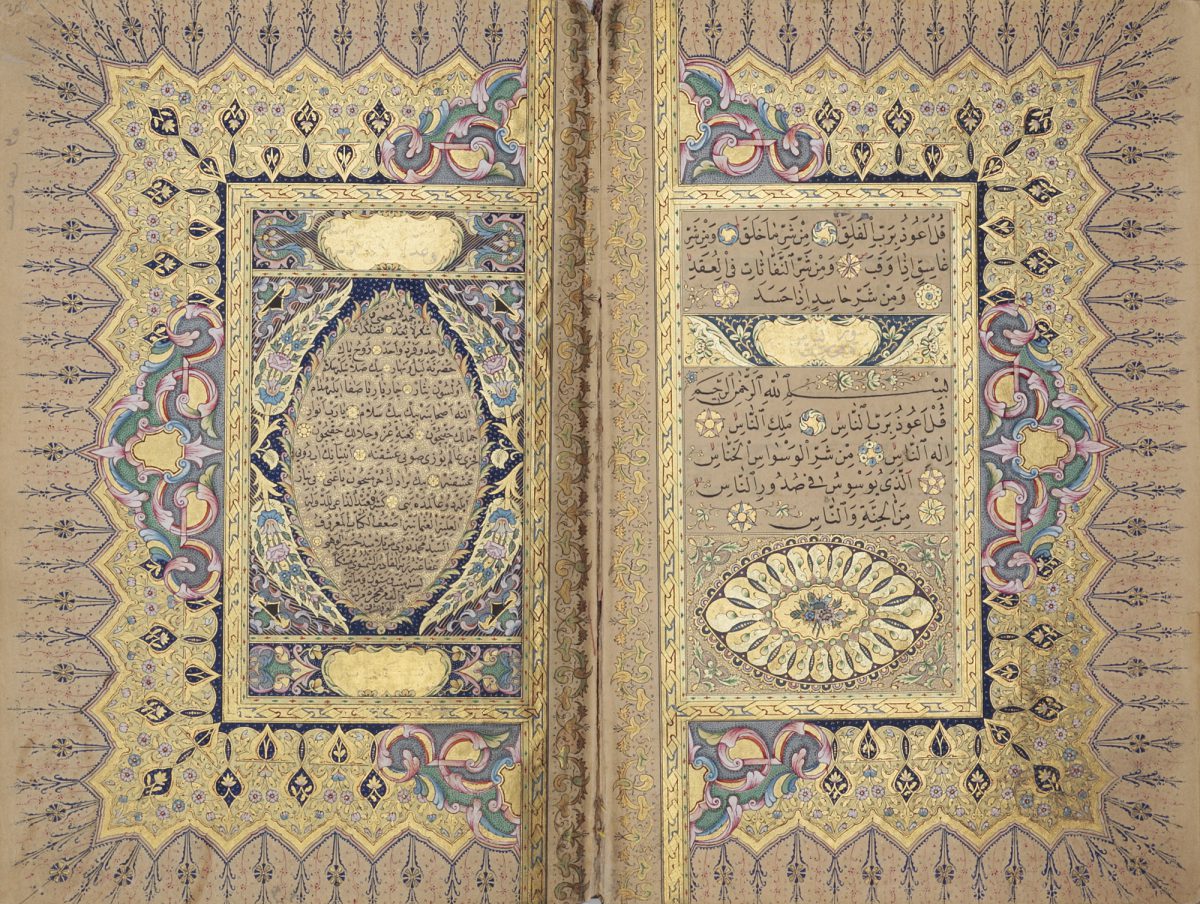



Title: Single-volume Qur’an
Date: dated 1266 AH (1849–50 AD)
Location: Ottoman Balkans, probably Shumen
Materials: ink, gold and opaque watercolour on paper; contemporary binding with flap of brown morocco painted in gold; paper doublures and fly leaves with floral designs
Dimensions: 308 folios; 17.1 x 11.7cm
Accession Number: QUR 343
Other Notes:
The scribe was a pupil of Hüseyin Vehbi, who lived at Shumen in Bulgaria on the borders of the Dobruja. During the late Ottoman period, Shumen was an important provincial centre for the copying, illumination and binding of high-quality, small-format Qur’ans, which found a ready market in Istanbul and were even acquired by the palace.
The rich illumination combines acanthus scrolls and elements from the classical Ottoman repertoire of chinoiserie, arabesque and European rococo motifs into new forms. Such works demonstrate the vigour of traditional local styles even into the mid 19th century, when Ottoman decoration was much influenced by European tastes.
Script:
main text copied in naskh script, incidentals in riqa‘; 15 lines to the page
Bibliography:
M. Bayani,T. Stanley & J.M. Rogers, The Decorated Word. Qur’ans of the 17th to 19th Centuries, The Nasser D. Khalili Collection of Islamic Art, volume IV, Part Two, London 2009, cat.54, pp.230–31.
J.M. Rogers, The Arts of Islam. Masterpieces from the Khalili Collection, London 2010, cat.264, pp.228–9.
Zoom
Close

Create your own collection of artworks that you can print or save as a PDF. Please enter you email to enable feature.
Small Flask | JLY 1075
Has been added to your collection.
TIP:
You can now access and view your collection from the main menu at any time.